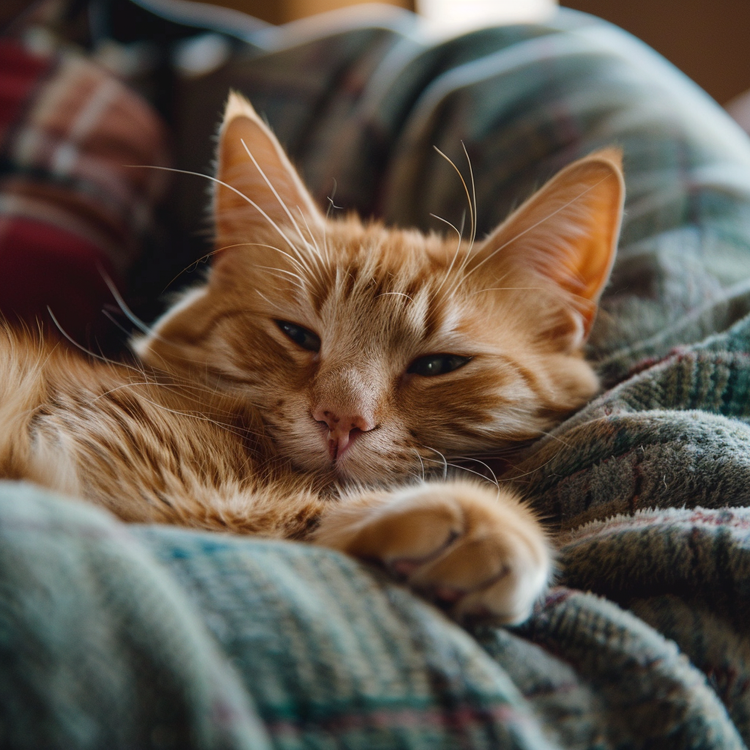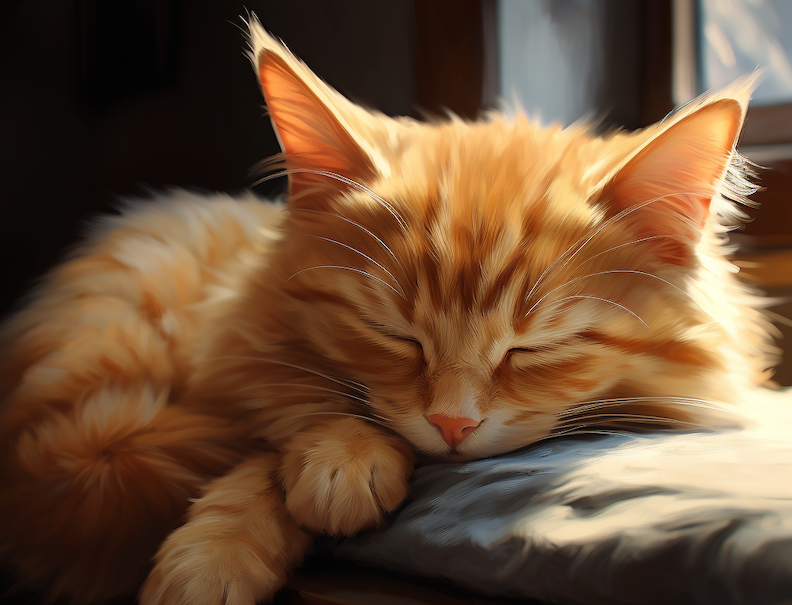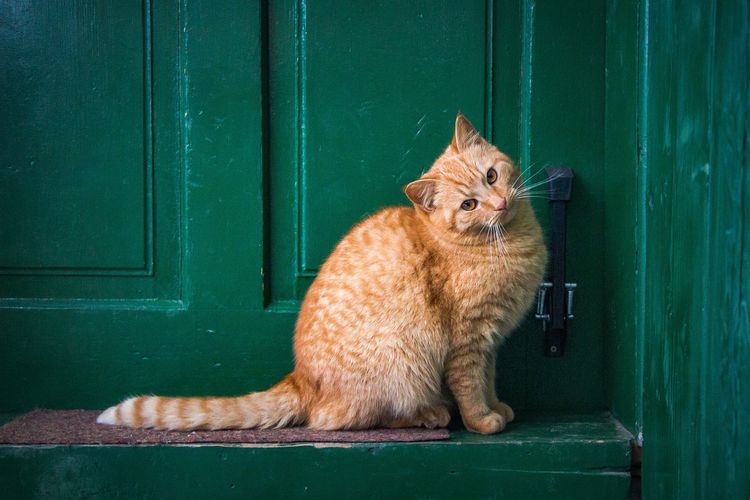Feeding Your Cat: Pawsome Tips for Choosing the Right Food and Creating a Fabulous Feeding Routine

Meow there! When it comes to feeding your adorable feline friend, it's not just about filling their tummy—it's about nourishing their soul and keeping them happy and healthy. From finding the purr-fect food to establishing a fabulous feeding routine, we've got you covered with some pawsome tips that will make mealtime a delightful experience. So, grab a catnip toy and let's dive into the world of feline nutrition and feeding fun!
Deciphering Your Cat's Culinary Cravings
Ever wondered why your cat turns up their nose at certain foods? Well, cats are known for their discerning taste buds and individual preferences. Some adore fish flavors, while others prefer poultry. Take note of your cat's favorite flavors and textures to cater to their unique culinary cravings. It's all about finding the food that makes them purr with delight!
Ever wondered why your cat turns up their nose at certain foods? Well, cats are known for their discerning taste buds and individual preferences. Here's a closer look at understanding your feline friend's culinary cravings:
Finicky Felines:
Cats can be quite particular about their food choices. Each cat has their own unique preferences and tastes. Some may have a strong affinity for fish flavors, while others may prefer the savory goodness of poultry. Some may even have a penchant for specific textures, such as tender shreds or crunchy kibbles. Pay attention to what makes your cat's taste buds tingle and incorporate those flavors and textures into their meals.
Variety is the Spice of Life:
- Just like humans, cats can get bored with the same old meals. Introducing variety into their diet can help keep them engaged and excited about mealtime. Experiment with different flavors and protein sources to cater to their ever-changing cravings. From chicken and turkey to salmon and tuna, offer a range of options to satisfy their discerning palates.
Trial and Error:
- Discovering your cat's preferred foods may require a bit of trial and error. Start by offering small portions of different flavors and observing their response. Note which ones they eagerly gobble up and which ones they seem less enthusiastic about. Over time, you'll gain insight into their culinary preferences and can tailor their meals accordingly.
Textural Delights:
Besides flavors, cats also have preferences when it comes to textures. Some may enjoy the tender and juicy consistency of wet food, while others may savor the crunchiness of dry kibbles. Mixing up the textures can add excitement and variety to their meals. You can also try offering a mix of wet and dry food to give them the best of both worlds.
Adapting to Changing Tastes:
Just like humans, a cat's preferences can evolve over time. What they loved as kittens may not be their favorite as adults. Stay attuned to their changing tastes and adjust their meals accordingly. Keeping up with their culinary cravings ensures they stay satisfied and content.
Remember, understanding your cat's culinary preferences is a delightful journey of exploration. Take note of their favorite flavors, experiment with variety, and adapt to their changing tastes. By catering to their individual cravings, you'll create a mealtime experience that makes their taste buds purr with delight!
Wet Food Wonders and Dry Food Delights
When it comes to cat food, there are two main contenders—wet and dry food. Wet food is like a gourmet feast with its high moisture content, perfect for keeping your kitty hydrated and supporting urinary health. On the other paw, dry food offers convenience and can help maintain dental health. Strike a pawfect balance by incorporating both options into your cat's diet. It's like having the best of both worlds!
Wet Food Wonders:
Wet cat food is like a gourmet feast for your kitty. With its high moisture content, it provides hydration, which is essential for maintaining urinary tract health. The soft texture of wet food is often more palatable for cats, making it a great option for those with picky appetites. It can be especially beneficial for cats who don't drink much water on their own.
Dry Food Delights:
Dry cat food, on the other paw, offers its own set of advantages. The crunchy kibbles provide a satisfying texture that can help promote dental health by reducing tartar and plaque buildup. Dry food is also convenient, as it can be left out for longer periods without spoiling. This can be especially helpful for pet parents who are away during the day or prefer free-feeding options.
Striking the Pawfect Balance:
So, which is better—wet or dry food? The answer lies in finding the right balance. Incorporating both wet and dry food into your cat's diet can provide the benefits of each. Wet food helps keep your cat hydrated, while dry food promotes dental health and offers convenience. By striking a balance between the two, you create a well-rounded diet that satisfies your cat's nutritional needs.
Customizing for Individual Cats:
- It's important to note that the ideal balance of wet and dry food can vary depending on your cat's specific needs. Factors such as age, health conditions, and personal preferences should be taken into consideration. Consult with your veterinarian to determine the best ratio for your furry friend. They can provide guidance based on your cat's unique circumstances.
Remember, it's all about finding the pawfect balance that works for your cat. Incorporating both wet and dry food into their diet offers the benefits of hydration, dental health, and convenience. By tailoring their meals to their specific needs, you can provide a well-rounded diet that keeps them happy and healthy.
Unraveling the Mystery of Cat Food Labels
Cat food labels can be a bit puzzling, but fear not, we're here to decode them! Take a closer look at the ingredient list—opt for foods with real, high-quality proteins as the main ingredients. Skip the fillers and by-products! Also, check out the guaranteed analysis section to understand the nutrient content. Look for foods that meet the standards set by the Association of American Feed Control Officials (AAFCO) for complete and balanced nutrition. It's time to become a cat food label detective!
From Meow-notonous to Mouthwatering: Introducing New Foods
Introducing a new cat food? Take it slow and make it tantalizingly tasty! Cats can be quite sensitive to sudden dietary changes, so transition gradually by mixing a small amount of the new food with the old food. Increase the proportion over several days, allowing your cat to adjust to the new flavors and textures. It's like a culinary adventure for their taste buds!
Gradual Transition:
Cats can be sensitive to sudden dietary changes, so it's important to introduce new foods gradually. Start by mixing a small amount of the new food with their current food. Over the course of several days, gradually increase the proportion of the new food while decreasing the old food. This slow transition allows your cat to adjust to the new flavors and textures without causing digestive upset.
Tempting Tastes:
Make the transition even more exciting by making the new food extra enticing. Consider warming up the food slightly to enhance its aroma, or sprinkle a small amount of freeze-dried meat or fish on top for an added flavor boost. The goal is to make the new food irresistible and turn the transition into a delightful culinary adventure for your cat's taste buds.
By taking it slow and making the introduction of new food a mouthwatering experience, you'll help ensure a smooth transition for your cat. Their taste buds will thank you as they embark on a delicious journey of exploring new flavors and textures.
Creating a Feast-Worthy Feeding Routine
Cats thrive on routine, so it's time to create a feast-worthy feeding routine! Establish regular meal times and stick to them. Adult cats typically enjoy two meals a day, while kittens may need more frequent nibbles. Avoid free-feeding and instead measure your cat's food portions based on their age, size, and activity level. A structured feeding routine brings out the inner foodie in your feline friend!
Regular Meal Times:
- Establish regular meal times and stick to them. Cats appreciate the predictability and structure of a consistent feeding schedule. Adult cats typically enjoy two meals a day, while kittens may need more frequent nibbles. Find a schedule that works best for your cat and try to stick to it as closely as possible.
Portion Control:
- Avoid free-feeding and instead measure your cat's food portions based on their age, size, and activity level. This helps prevent overeating and obesity. Consult with your veterinarian to determine the appropriate portion sizes for your cat's specific needs. Measuring their meals ensures they receive the right amount of nutrition to keep them healthy and fit.
Embrace the Feeding Fiesta:
- Turn mealtime into a celebration! Make it an interactive and engaging experience for your cat. Use puzzle feeders or food-dispensing toys to stimulate their minds and encourage natural hunting behaviors. This adds an element of fun and enrichment to their feeding routine. Additionally, consider providing a variety of feeding locations to keep things interesting.
Mealtime Bonding:
- Use mealtime as an opportunity to bond with your cat. Engage in gentle interactions and positive reinforcement during and after meals. This strengthens the bond between you and your feline friend while associating mealtime with positive experiences.
Remember, a feast-worthy feeding routine brings out the inner foodie in your cat. Establish regular meal times, practice portion control, and make mealtime a joyful experience. By embracing the feeding fiesta, you'll not only nourish their body but also nurture your bond with your beloved feline companion.
Portion Control and Weight Management Made Fun
Just like us, cats need portion control to maintain a healthy weight. Keep an eye on your cat's body condition and adjust food portions accordingly. If your cat needs to shed a few pounds, consult with your veterinarian to develop a weight management plan. It's all about finding the purr-fect balance between delicious meals and a healthy physique.
Regular Meal Times:
- Establish regular meal times and stick to them. Cats appreciate the predictability and structure of a consistent feeding schedule. Adult cats typically enjoy two meals a day, while kittens may need more frequent nibbles. Find a schedule that works best for your cat and try to stick to it as closely as possible.
Portion Control:
Avoid free-feeding and instead measure your cat's food portions based on their age, size, and activity level. This helps prevent overeating and obesity. Consult with your veterinarian to determine the appropriate portion sizes for your cat's specific needs. Measuring their meals ensures they receive the right amount of nutrition to keep them healthy and fit.
Embrace the Feeding Fiesta:
Turn mealtime into a celebration! Make it an interactive and engaging experience for your cat. Use puzzle feeders or food-dispensing toys to stimulate their minds and encourage natural hunting behaviors. This adds an element of fun and enrichment to their feeding routine. Additionally, consider providing a variety of feeding locations to keep things interesting.
Mealtime Bonding:
Use mealtime as an opportunity to bond with your cat. Engage in gentle interactions and positive reinforcement during and after meals. This strengthens the bond between you and your feline friend while associating mealtime with positive experiences.
Remember, a feast-worthy feeding routine brings out the inner foodie in your cat. Establish regular meal times, practice portion control, and make mealtime a joyful experience. By embracing the feeding fiesta, you'll not only nourish their body but also nurture your bond with your beloved feline companion.
Feeding your cat is a purr-sonal and fun-filled experience that revolves around nourishing their body and delighting their taste buds. With a touch of understanding their preferences, incorporating wet and dry food delights, unraveling cat food labels, and creating a feast-worthy feeding routine, you're on your way to becoming a true culinary connoisseur for your feline companion. So, embrace the feeding fiesta and watch your cat purr with joy at every mealtime adventure. Cheers to a happy, healthy, and tasty journey together!


